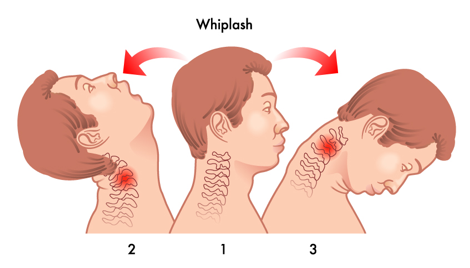Ever experienced bad neck pain after trauma and are unsure if you have a whiplash injury? Fret not, you are not alone! Whiplash is very commonly ignored and passed off as muscle pain and stiffness. UFIT Senior Physiotherapist Gaya Mahendram gives us just the tips to identify, recover and prevent a whiplash injury.
What is Whiplash?
Let us kick off by understanding the basics of what constitutes a whiplash injury. Whiplash is a neck injury caused by the forceful, rapid back and forth movement of the neck most commonly caused by road traffic accidents or a hard tackle from playing contact sports.
Pain with this condition is commonly felt in the back of the neck that extends from the base of the skull, down towards the shoulder blades, and the spine. These symptoms of neck pain can be felt almost directly after the injury or may start to creep up a few days after the injury.
What are the Symptoms of Whiplash?
While it might be tricky to differentiate the symptoms between a whiplash and neck pain, there are some key indicators that can help you distinguish between the two. Symptoms that include pain or tenderness in the shoulder, arm, or upper back area, difficulty speaking or swallowing, ringing in the ears and blurred vision are some of the red flags for you to seek a professional opinion.
How seeing a Physiotherapist helps
A common question is whether you should consult a doctor or a physiotherapist. While a doctor might prescribe painkillers to ease the pain, a Physiotherapist would not only be able to correctly diagnose the injury but also give you a comprehensive recovery plan by looking into all the affected areas.
A carefully tailored physiotherapy plan will be aimed to improve the range of motion of affected joints to significantly reduce neck pain and headaches, decrease and strengthen muscle spasms, and give you constructive advice to return to sport safely.
How Can I Help Myself if I might have a Whiplash Injury?
Before you do consult a Doctor or Physiotherapist, there are some DIY recovery tips you could start doing to help ease the pain:
- Ice pack therapy upon initial onset (first 72 hours), 10-15 minutes several times a day
- Mindfulness about posture - always maintain a good, upright posture while sitting, standing, and walking
- If you are using a computer, adjust your chair and computer screen to a comfortable level
- Heat pack therapy to help relieve the tension in muscles 10-15 minutes several times a day
- Take your prescribed medication and always follow the recommended dosage instructions when taking your painkillers
How will I get Better from Whiplash Injury?
“Will I get better?” is a burning question most individuals have. Bear in mind that as symptoms and severity of a Whiplash injury can vary among individuals, the recovery time would not be the same for everyone. The best advice I can give would be to look on the bright side, keep an open mind with treatment, and most importantly, exercise with proper care and advice from your physiotherapist.


.png?width=301&height=187&name=Website%20Navigation%20Images%20(3).png)

-1.jpg?width=1984&height=1196&name=UFIT%20Club%20Street%20Front%20(4)-1.jpg)









